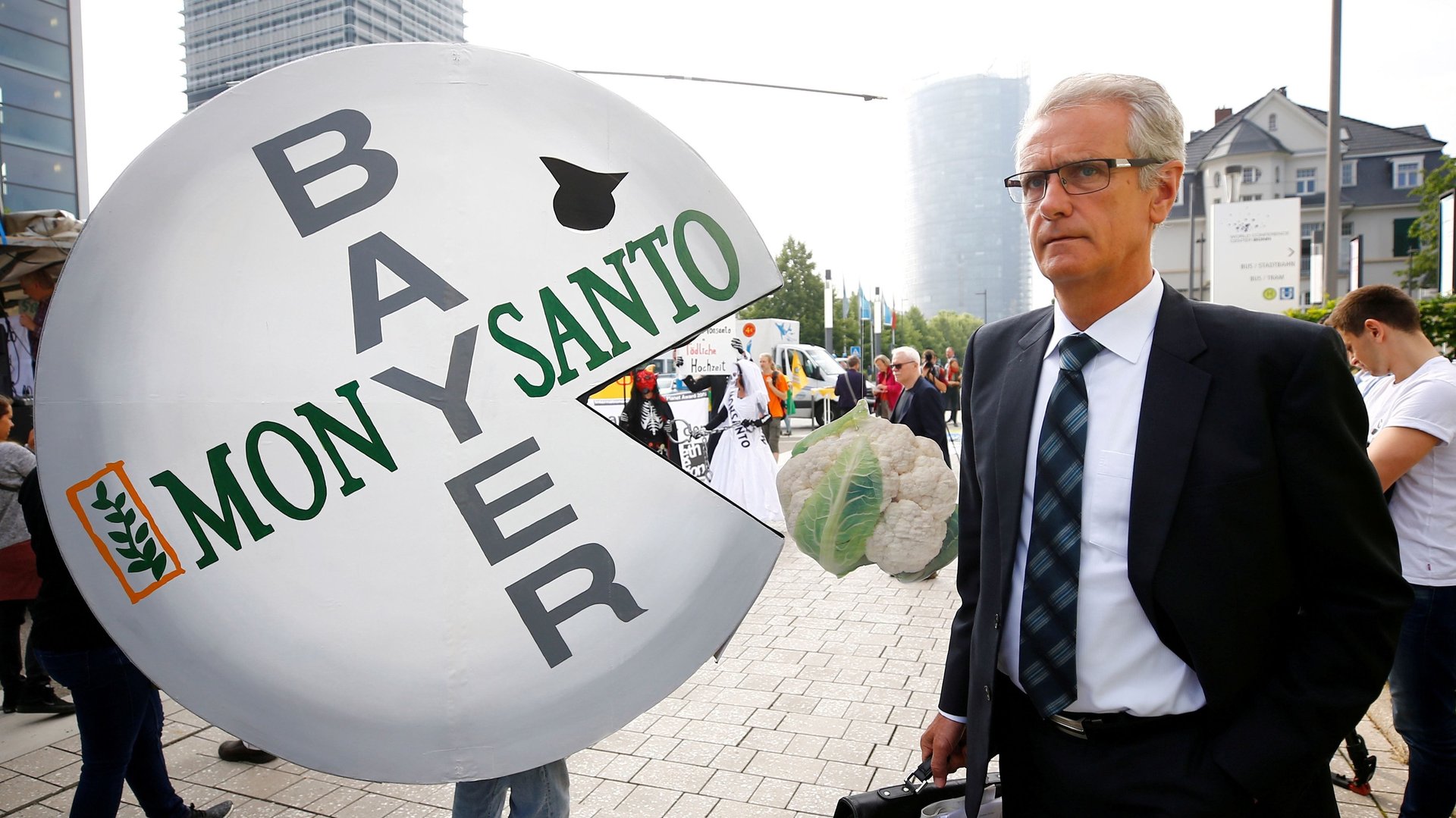Monsanto’s worst enemy is one it cannot control: the wind
Two of the largest American seed companies are spearheading an effort to have the US government limit the seasons in which farmers can spray dicamba, a controversial Monsanto weed-killing chemical, onto their crops.


Two of the largest American seed companies are spearheading an effort to have the US government limit the seasons in which farmers can spray dicamba, a controversial Monsanto weed-killing chemical, onto their crops.
Beck’s Hybrids and Stine Seed are asking the US Environmental Protection Agency (EPA) to only allow the spraying of dicamba herbicides during the spring, according to Reuters. But since soybeans don’t sprout until the summer in the US, that essentially means American farmers would not be able to use the weedkiller at all. That could put an end to Monsanto-made, dicamba-resistant soybeans plants, currently make up about a quarter of the total soybean crops grown in the US.
The issue boils down to mother nature. The leading soybean-producing states in the US are Illinois, Iowa, and Minnesota—parts of the largely-flat American Midwest where sweeping winds have been known to carry the sprayed Monsanto herbicide to neighboring farms and front lawns, where it’s killed off flower beds and other crops that are not grown with specially-engineered, dicamba-resistant seeds.
It’s a pretty bad problem, too. In 2017, windswept dicamba damaged an estimated 3.6 million acres of soybeans that weren’t grown from specially-designed seeds. That’s close to about 4% of all US plantings in a country that grew 90.1 million acres (pdf) of the crop in 2018. In the US, soybeans are a $41 billion business, one of the biggest segments of the country’s agriculture. In 2018, about 22 million acres of soybean crops total are estimated to have been grown from dicamba-resistant seeds.
Reports of herbicides being taken by the wind into neighboring crops and lawns began to be filed with state agricultural offices last year, not long after the government gave the green light to use the chemical on crops. Dicamba has been used in the US for decades, but it wasn’t until 2017 that the EPA approved its use as an “over-the-top” application, which means it could be sprayed on fields in which the soybean plants were growing, as opposed to only used before the plants actually sprout.
In the fall of last year, three companies that manufacture dicamba-based herbicides—Monsanto, BASF, and DuPont—signed off on new instructions (paywall) for farmers that specify not to spray when winds exceed 10 miles per hour. Still, that doesn’t seem to be enough to stopper broader fears about the potential impact of the spray.
Beck’s Hybrids and Stine Seed’s request to the EPA adds to what has been a tumultuous week for Monsanto. On Thursday (Aug. 16), the company became fully integrated with its new owner, the German-based Bayer Group. On Wednesday (Aug. 15), the Environmental Working Group published a report showing higher-than-expected levels of glyphosate—the chemical in Monsanto’s popular weedkiller RoundUp—in a number of popular breakfast cereals. And last Friday (Aug. 10), Monsanto was ordered by a jury to pay $289 million in damages to a California man who claims glyphosate exposure caused his non-Hodgkin’s lymphoma.